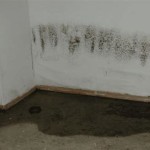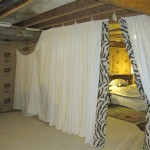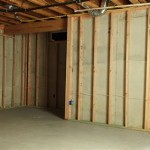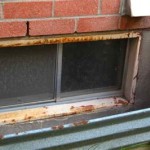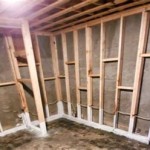How to Make a Musty Basement Smell Better
A musty basement odor is a common household problem, often indicative of moisture issues and potential mold growth. Addressing this smell requires a multi-faceted approach, involving thorough investigation, cleaning, and preventative measures. The goal is not simply to mask the odor, but to eliminate the underlying cause, creating a healthier and more pleasant environment.
The presence of a musty smell nearly always points to excessive moisture. Basements, often located below ground level, are particularly susceptible to water intrusion from various sources, including groundwater seepage, rainwater runoff, condensation, and plumbing leaks. Understanding the source of the moisture is crucial for effective odor elimination.
Mold and mildew thrive in damp, dark environments. These microorganisms release volatile organic compounds (VOCs) that contribute to the characteristic musty odor. In addition to the unpleasant smell, mold can also pose health risks, particularly for individuals with allergies or respiratory sensitivities. Therefore, addressing the moisture issue is paramount for both odor control and health concerns.
Identifying the Source of the Musty Smell
The first step in combating a musty basement odor is to pinpoint the source. A systematic inspection of the basement is necessary, paying close attention to areas prone to moisture accumulation. This inspection should include a visual assessment, as well as tactile and olfactory examination.
Begin by checking for visible signs of water damage, such as water stains on walls or floors, efflorescence (a white, powdery deposit on concrete or brick), or standing water. Examine the walls and floor for cracks or other structural defects that could allow water to seep in.
Pay particular attention to areas around pipes, windows, and doors, as these are common entry points for water. Inspect the foundation for any signs of damage or deterioration. Check the gutters and downspouts outside the house to ensure they are properly functioning and directing water away from the foundation.
Feel the walls and floors for dampness. Even if there are no visible signs of water damage, the surface may be slightly damp to the touch. This could indicate that moisture is wicking through the concrete or brick.
Use your sense of smell to identify the areas where the musty odor is strongest. This can help you narrow down the source of the problem. If possible, use a moisture meter to measure the moisture content of different surfaces. This can provide a more accurate assessment of the extent of the moisture problem.
Common sources of basement moisture include:
*Groundwater Seepage:
Water seeping through the foundation walls or floor. *Rainwater Runoff:
Rainwater accumulating around the foundation and seeping into the basement. *Condensation:
Moisture condensing on cold surfaces, such as pipes or walls. *Plumbing Leaks:
Leaks from pipes, water heaters, or washing machines. *Poor Ventilation:
Lack of adequate ventilation, trapping moisture in the basement. *High Humidity:
Elevated humidity levels in the basement air.Once the source of the moisture has been identified, it is crucial to address the problem promptly and effectively.
Cleaning and Remediation
After identifying and addressing the moisture source, the next step is to clean and remediate any mold or mildew growth. This process involves thorough cleaning and disinfection of affected surfaces, as well as removal of any contaminated materials.
Before beginning the cleaning process, it is essential to take precautions to protect yourself from exposure to mold spores. Wear appropriate personal protective equipment (PPE), including a respirator mask, gloves, and eye protection. Ensure adequate ventilation in the basement by opening windows or using fans.
For small areas of mold growth (less than 10 square feet), you may be able to clean the affected surfaces yourself. Use a solution of water and detergent to scrub the mold off the surfaces. For porous materials, such as drywall or wood, you may need to use a stronger cleaning solution, such as bleach. However, bleach should be used with caution, as it can damage some materials and release harmful fumes. Always follow the manufacturer's instructions when using bleach or any other cleaning product.
After cleaning the affected surfaces, disinfect them with a mold-killing disinfectant. This will help to prevent the mold from returning. Allow the surfaces to dry completely before using the basement.
For larger areas of mold growth (more than 10 square feet), it is recommended to hire a professional mold remediation company. These companies have the expertise and equipment to safely and effectively remove mold from your basement. They can also identify and address the underlying moisture problem to prevent future mold growth.
In some cases, it may be necessary to remove and replace contaminated materials, such as drywall or carpeting. These materials can be difficult to clean effectively and may harbor hidden mold growth. Replacing them is often the most effective way to eliminate the mold problem.
Disposing of mold-contaminated materials requires careful handling. Seal the materials in plastic bags before removing them from the basement. Dispose of the bags in accordance with local regulations.
Preventative Measures
Once the musty odor has been eliminated and the mold problem resolved, it is important to take steps to prevent the problem from returning. This involves addressing the underlying moisture issues and implementing preventative measures to keep the basement dry and well-ventilated.
Address any sources of water intrusion, such as leaky pipes or cracks in the foundation. Repair or replace damaged plumbing fixtures. Seal any cracks or gaps in the foundation walls or floor. Ensure that gutters and downspouts are properly functioning and directing water away from the foundation.
Improve ventilation in the basement by opening windows or installing a dehumidifier. A dehumidifier will help to remove excess moisture from the air, creating a less favorable environment for mold growth. Ensure that the dehumidifier is properly sized for the size of the basement and that it is regularly cleaned and maintained.
Consider installing a vapor barrier on the walls and floor of the basement. A vapor barrier will help to prevent moisture from seeping into the basement. Choose a vapor barrier that is specifically designed for basement use and that meets local building codes.
Maintain a clean and dry basement by regularly cleaning and inspecting the area. Remove any clutter or debris that could trap moisture. Repair any leaks or water damage promptly. Monitor the humidity levels in the basement and take steps to reduce them if they are too high.
Ensure proper drainage around the foundation. The ground should slope away from the foundation to prevent water from accumulating around the base of the house. Consider installing a French drain to redirect groundwater away from the foundation.
Regularly inspect the basement for signs of moisture or mold growth. Early detection is key to preventing a more serious problem. If you notice any signs of moisture or mold, take steps to address the problem promptly.
By implementing these preventative measures, you can help to keep your basement dry, clean, and free of musty odors.

How To Get Rid Of Mold And Mildew Smell In Your Basement Aircare

Basement Waterproofing And The Smells In Your Home Atlanta Cgs

8 Steps To Get Rid Of Musty Basement Smells Baker S Waterproofing

How To Get Rid Of Musty Basement Smell Effective Solutions

Get Rid Of Musty Odor In Basement Servicemaster Restore

How To Get Rid Of Basement Odor And Why It Smells In The First Place

How To Get Rid Of Musty Smell In Basement Wet Basements

Musty Smell In The Basement 4 Steps To Freshness Bob Vila

How To Make A Basement Smell Better With S Wikihow

Musty Smell In The Basement 4 Steps To Freshness Bob Vila
Related Posts

